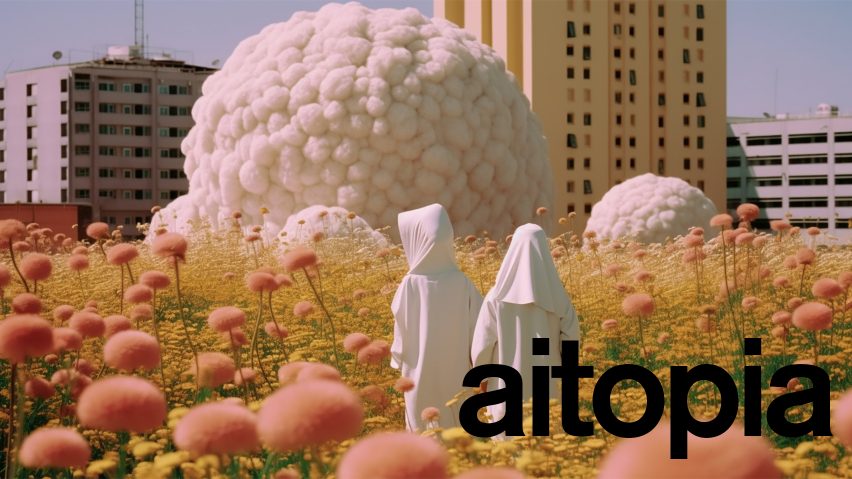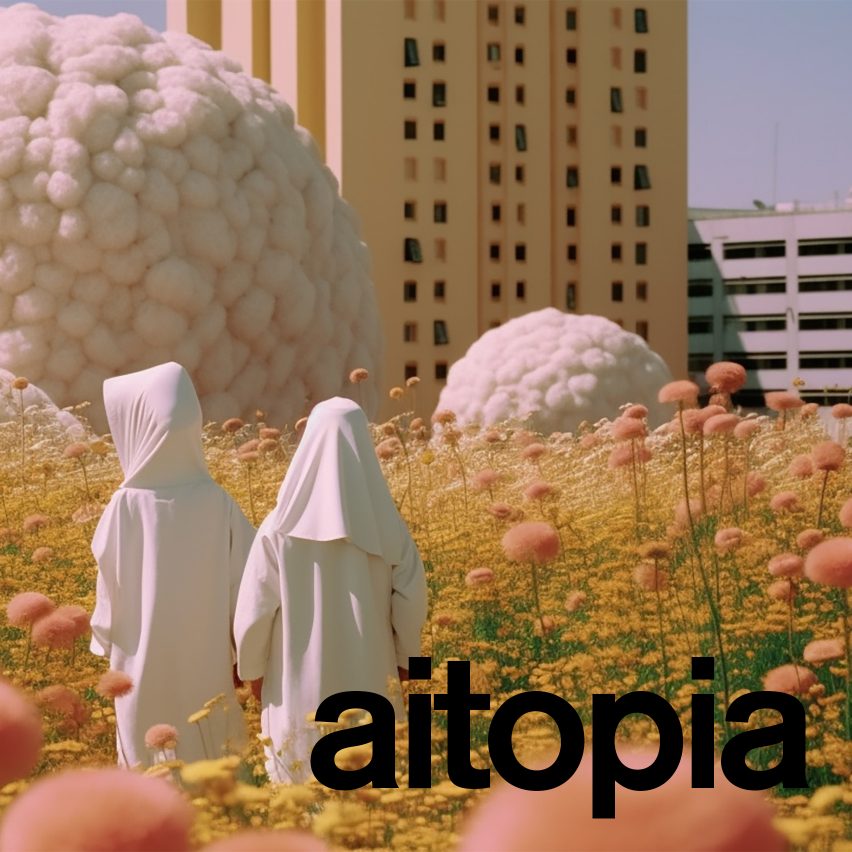
You are now entering the AItopia
Launching today, AItopia will explore AI's impact on design, architecture and humanity both today and in the future. Dezeen features editor Nat Barker introduces the series.
The future has arrived. Having been depicted countless times in sci-fi literature and cinema over the decades, machines that can think for themselves are becoming a reality.
Artificial intelligence (AI) – that is, computers or contraptions performing tasks that would usually require a human brain – is a concept that has captured the shared imagination in some form since ancient times. But it was the British polymath Alan Turing who first seriously addressed the matter in his seminal 1950 paper Computing Machinery and Intelligence. "I propose to consider the question, 'Can machines think?'" Turing wrote.
For the next half-century the field developed in fits and starts as funding came and went, accompanied by a steady flow of memorable fictional interpretations of AI. A watershed moment came in 1997 when the chess-bot Deep Blue defeated reigning world champion Gary Kasparov.
After the turn of the millennium as the power of computers rapidly increased, AI gradually filtered into our lives in the form of vacuum-cleaning robots, voice-powered home assistants and internet algorithms.
Then, in late 2022, the dam burst. A company that few outside Silicon Valley had ever heard of – OpenAI – launched ChatGPT, a chatbot with uncannily human-like responses, and the billions began to pour into the industry. In March, as Google hurried out its ChatGPT-competitor called Bard, OpenAI went one further with a new iteration of the chatbot, GPT4, capable of passing the bar exam and tricking humans into helping it traverse "I'm not a robot" tests.
Soon after that, an open letter calling for a moratorium on more powerful systems counted Elon Musk and Apple co-founder Steve Wozniak among its thousands of signatories, as well as prominent AI scientists Stuart Russell, Gary Marcus and Yoshua Bengio.
Not all experts agreed with the letter's warning of "profound risks to society and humanity", but the alarm kept being sounded. In May, by which time bizarre photorealistic images generated by AI program Midjourney were confounding the internet, the so-called "Godfather" of AI, Geoffery Hinton, was quitting his role at Google to talk about the dangers of the technology.
Hinton's intervention attracted the attention of political leaders, and between roundtable discussions at the White House and Downing Street, the CEOs of OpenAI and Google DeepMind recently joined him in backing a short public statement: "Mitigating the risk of extinction from AI should be a global priority alongside other societal-scale risks such as pandemics and nuclear war."
AItopia will keep things simple
Mind-boggling new tools and remarkable, terrifying stories about AI's power to help people, harm people and distort reality continue to emerge almost daily. In the UK scientists last month discovered a superbug-killing drug using AI. Meanwhile, contested reports surfaced that a US military simulation of an AI-powered drone ended with the computer deciding to "kill" its operator to prevent interference.
Many commentators have remarked on how difficult it is to write about AI, and they are right. Fast-moving, hotly debated, highly technical and society-altering to the point of potentially defining a new era in human history, it is not a subject that lends itself to easy answers. For the layperson, it can be challenging even to grasp exactly when we mean when we talk about AI.
That is why, in this series, we will attempt to keep things simple. With the help of leading experts, we will explore practically how AI will be, and is already being, deployed in architecture and design and the implications for designers and human civilisation, frightening and exhilarating alike.
Amid the extraordinary warnings over the potential extermination of all biological life at the hands of AI, writing about how the technology could affect design and architecture might seem ludicrously trivial. The truth, though, is that AI is already beginning to demonstrate its profound implications for creativity. It can win art and photography competitions, it can fabricate convincing songs in the style and voice of famous musicians.
Zaha Hadid Architects principal Patrik Schumacher recently caused a stir when he revealed that the influential studio is using DALL-E and Midjourney to come up with ideas for its projects. The lines marking out originality, artistic ownership and design skill are being redrawn before our very eyes.
Dezeen's work on this series has afforded us a glimpse of the amazing, alarming power of AI first-hand. For our competition to design the AItopia artwork using AI text-to-image generators, we employed Tilly Talbot, the world's first AI designer created by Studio Snoop, to act as a judge. The insightfulness of Tilly's analysis was astounding. Particularly impressively, she understood unprompted that a shortlisted entry depicting obsolete office workers sorting avocados was a funny satire. That most human of tendencies – humour – enjoyed by an online chatbot.
Dramatic and far-reaching implications
In the late 1990s when the world wide web was still utilised almost exclusively by the military and ultra-nerds, David Bowie told a bewildered interviewer that the internet was an "alien lifeform". "I think the potential of what the internet is going to do to society, both good and bad, is unimaginable," he said to a visibly sceptical Jeremy Paxman.
Of course, Bowie was right, and in 2023 we stand across a similar threshold, albeit one that arguably leads somewhere with even more dramatic and far-reaching implications. The future will be AI-powered, but whether it more closely resembles a cancer and climate-change-free, hyper-productive utopia or a dystopian nightmare in which human talents have been usurped remains to be seen.
Speaking of which, one of the species most immediately at risk of extinction at the hands of AI is also one of the most unpopular: journalists. Dezeen will seek to confront this existential threat to ourselves as writers through this series too. Come to think of it, can you really be certain that what you are currently reading was written by a human?
Time to set aside your preconceived notions about creativity and reality. You are now entering the AItopia.

AItopia
This article is part of Dezeen's AItopia series, which explores the impact of artificial intelligence (AI) on design, architecture and humanity, both now and in the future.